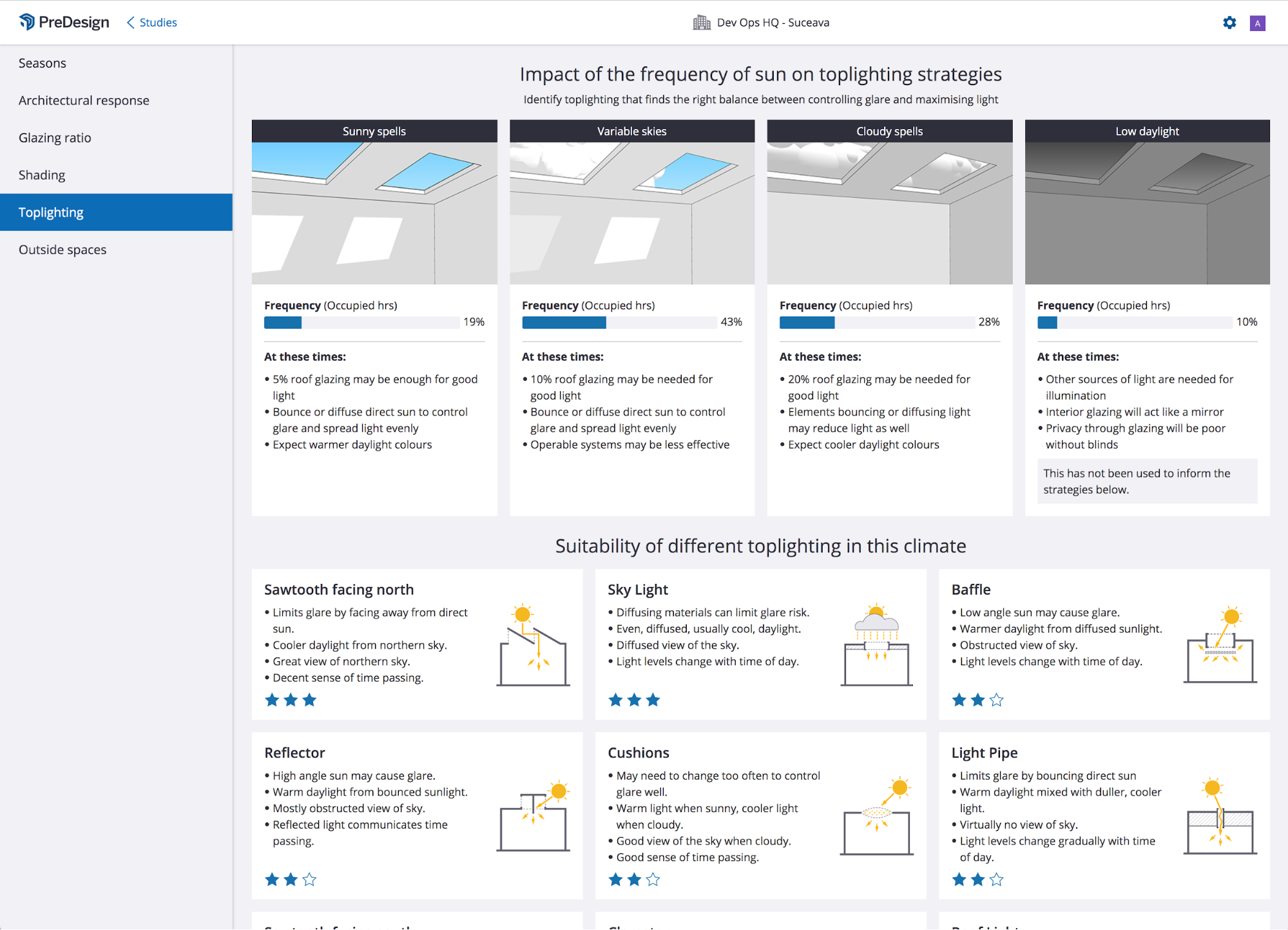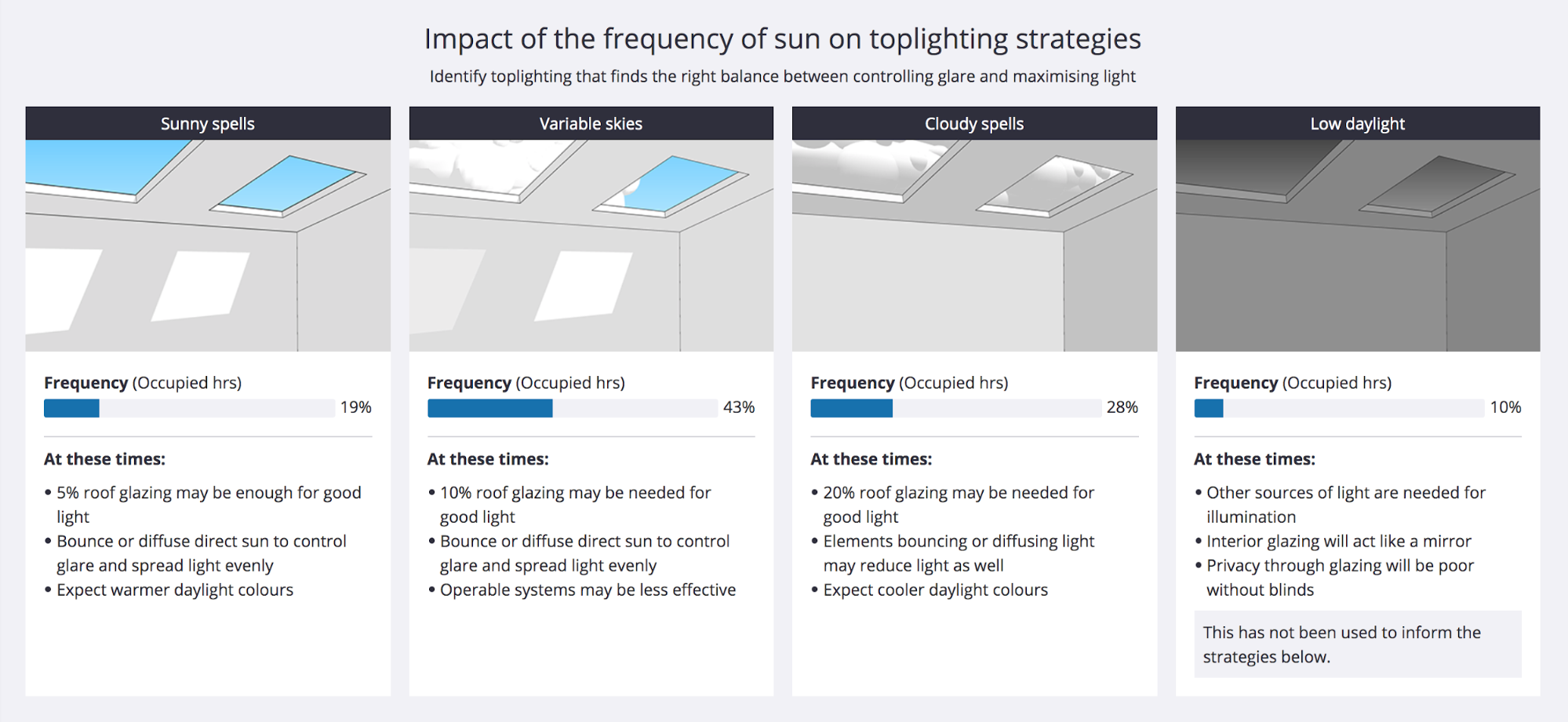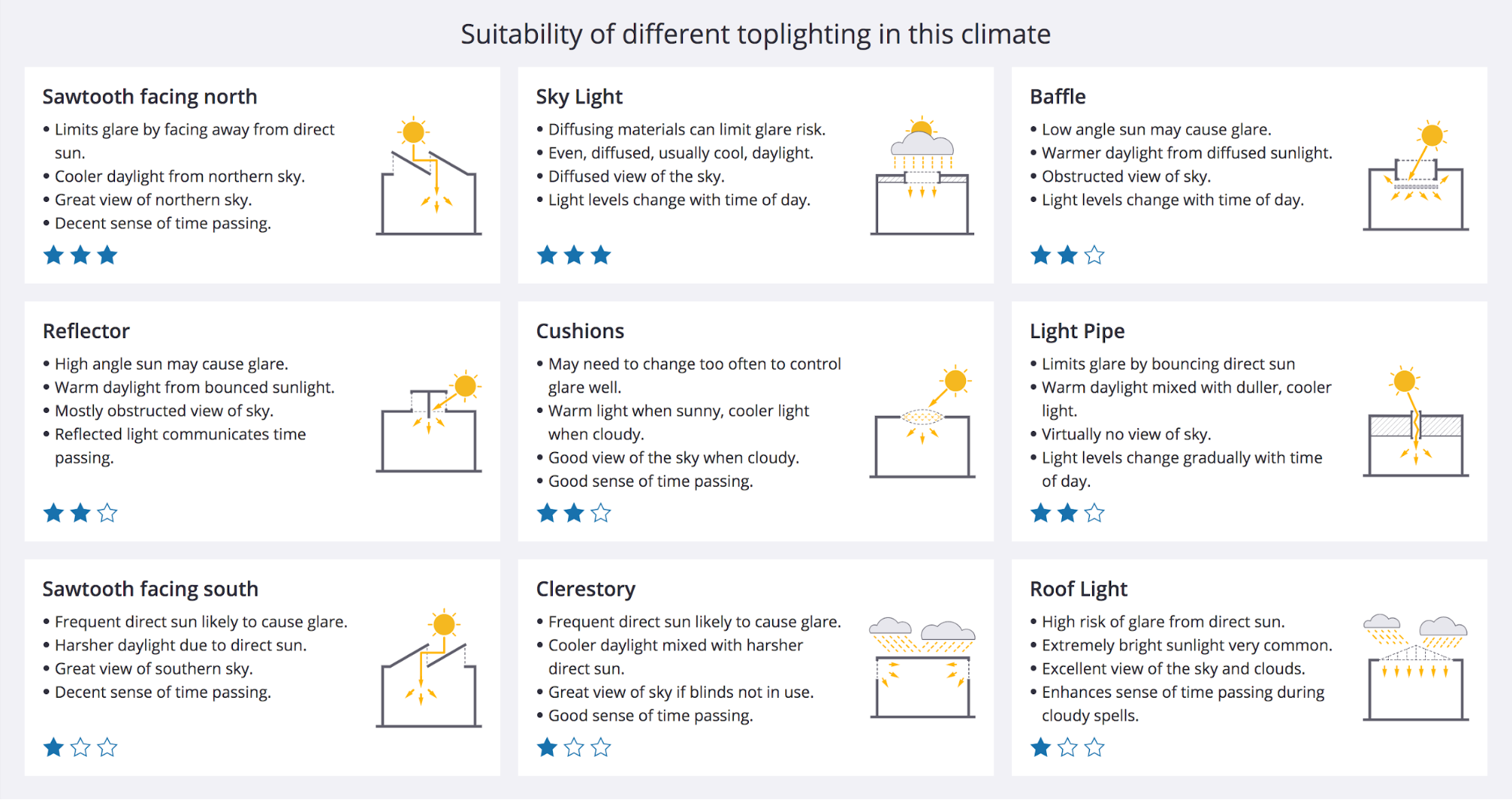Which solutions have the best overall potential for bringing daylight into this building?
Use this page to:
- Get a better feel for sky conditions that affect the choice of toplighting solution
- Get guidance on which toplighting design strategies are most likely to work well in this climate

How the climate affects toplighting
The top section of this page looks at 4 key conditions that occur in the historical climate data during occupied hours for the building.

For this feature, for non-residential projects, we break the sky conditions up into 4 broad conditions. These are based on sky cover (how much cloud is reported each hour) and are as follows:
- Sunny spells. Periods where there are at least 3 hours of clear skies in a row. Lots of sunny spells means plenty of time where you consistently get daylight in the form of direct sunlight.
- Cloudy spells. Periods where there are at least 3 hours of heavy cloud in a row. Lots of cloudy spells means plenty of time where you consistently get daylight in the form of diffuse light.
- Variable Skies. Periods where it is partly cloudy or where the sky switches back and forth between being cloudy and sunny. Lots of variable skies means the sun tends to alternate between being out and behind clouds.
- Low daylight. Periods where there is not enough daylight to realistically light up a building through toplighting.
Part of what helps us decide the best strategies for top-lighting, is how often a climate is affected by the above conditions. For example:
- If your project is located in a climate with lots of sunny spells, then the intensity of light is consistently quite high, meaning strategies that redirect or bounce light are better.
- If your project is located in a climate with lots of cloudy spells, then it’s likely you’ll need more glass and a clearer view of the sky, possibly with a strategy for glare protection for the times the sun comes out.
- If your project is in a climate with variable sky conditions, then adopting strategies that passively manage direct sun but also let in enough light work well.
Which strategies are most suitable
This section is to steer you in the right direction for toplighting strategies. The goal here is more to provoke design inspiration than to be a prescriptive solution.

Each card represents a different approach to shading the facade. On the card we offer a star rating score:
- 3-stars = Potentially an excellent solution
- 2-stars = Potentially a good solution
- 1-star = Some potential but may need a lot of optimising or design work
- 0-stars = Probably best avoided
Considerations that would need to be addressed, especially for lower scoring options might be factors like: :
- It would let in too much direct sun, which is likely to create glare issues for these types of buildings
- It may not let in very much daylight relative to other strategies
- It may come with automated controls that would need to be deployed too frequently.